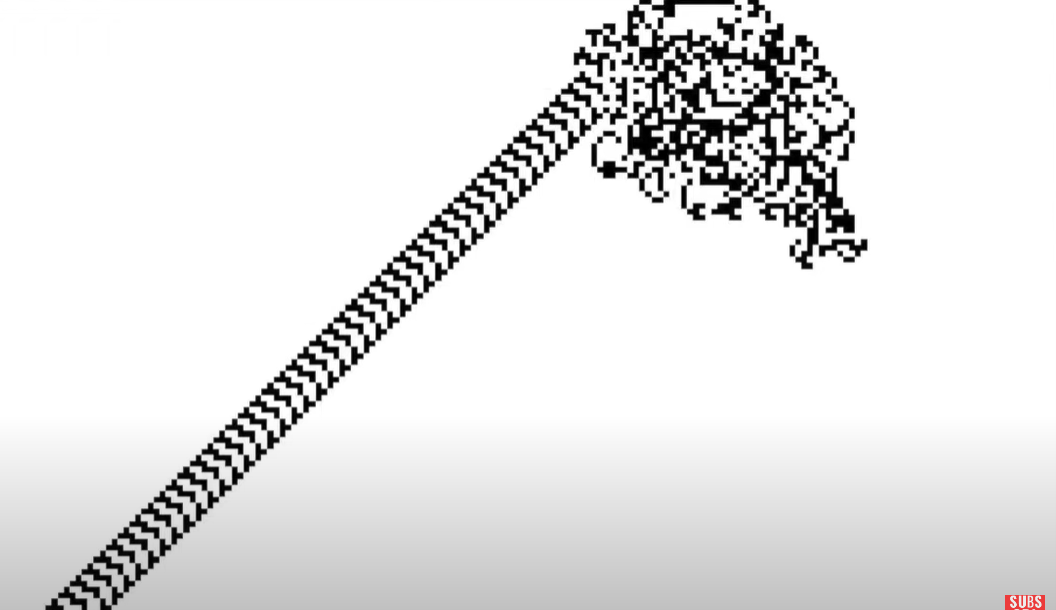The Weekly Reflektion 27/2024
Organisational change is challenging and often many individual changes are implemented. Sometimes the interaction between these changes result in chaos and risks can become high and unmanageable. There is then an effort to get the organisation back on the road again. Hopefully before a serious incident occurs.
Does chaos emerge when you make an organisational change?

The emergent pattern of Langton’s ant
Langton’s Ant is a two-dimensional puzzle that has a simple set of rules that leads to complex behaviour. It was invented by Chris Langton in 1986. An infinite lattice of white squares is set up and an ant placed on one of the squares. The ant can travel in four directions, not diagonally. On a white square the ant turns 90 degrees to the right and moves to the next square. The white square then turns black. On a black square the ant turns 90 degrees to the left and moves to the next square. The black square then turns white. These simple rules produce three distinctive observable patterns.
For the first few hundred moves simple patterns appear that are often symmetrical. After this period a large irregular pattern appears that is random and chaotic as can be seen in the top right-hand corner of the above figure. After about 10000 steps an emergent order is established where a ‘highway’ pattern emerges. This consists of 104 steps that repeat themselves ad infinitum. See the figure and the highway that runs from the chaotic pattern to bottom left. The emergent order seems to be valid even if some of the squares in the initial lattice are colored black and this has been tested empirically. It is currently not known if the emergent order is valid for all start configurations of black and white squares. As often in mathematics a hypothesis has been established and given a name, the Cohen-Kong theorem, and there is surely a great prestige for the mathematician that can prove the theorem is either correct or not correct.
Organisational change often follows a similar progression to the journey of the Langton Ant. At the start a simple pattern emerges as the individual changes take their effect. After a while the interactions between the changes starts to produce a chaotic situation that continues in an unpredictable manner. Then some stability is established as the people in the organisation adapt to the new situation and develop alternative ways of getting the job done. This may be as the management intended and performance improves leading to a successful change. However, the new ways of working may not be as intended, and safety and operational performance can be compromised. Then the management has to take action to prevent incidents, accidents and even Major Accidents.
In the eighties a UK Major Operator in the North Sea collected four of its aging installations together in a single asset. A late life operating model was established with the intention of reducing costs and extending field life. The new asset was given a mandate to deviate from established standards and mandatory processes in the company’s management system. The management and the people in the new asset started to dismantle the processes that they believed were ineffective and inefficient. Decisions were made with less bureaucracy, and people were allowed to cut through the red tape to get things done. In the initial period costs were reduced and safety performance was maintained. After a while the incident rate increased, and concerns were raised on the integrity of the systems offshore. The other assets experienced a significant cost increase as they had to bear a greater share of the company’s overheads. Whether an emergent order would have been established is unclear as the late life asset was sold off to another operator.
